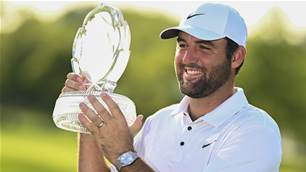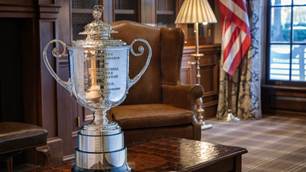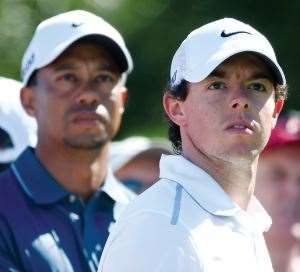Bringing Rory McIlroy aboard is a sure signal that Nike is set on outgrowing its image within golf as Tiger’s brand.
Rory McIlroy finally “made it” when he was chosen to not only partner Tiger in Nike’s campaigns, but to one day succeed him.
It was back in 2007 when an 18-year-old Rory McIlroy was playing the Australian Masters in Melbourne. He’d earned notice within golf for finishing as the top amateur at the British Open a few months before, confirming his status as one of the game’s talented kids. Emphasis on the word kid – between his ungainly frame, acne and trademark mess of curls, he looked every bit the awkward teen. A Scottish colleague noted how you just wanted to reach out and muss Rory’s hair good-naturedly, like he was your nephew.
McIlroy cut an unlikely figure for sporting greatness. That is, until he took the club back – you’d see that gift-from-God swing, apparent even then, and his potential could extrapolate to anything. Since that time, McIlroy has grown to become the heir to the post-Tiger Woods era, the picture of a jet-setting global golfer with a stylish game and even more stylish, tennis-star girlfriend.
The start of the year brought another significant step in the evolution of McIlroy’s image. In what was golf’s worst-kept secret, McIlroy signed on with Nike, a deal that may not have been worth the reported estimates of $250 million over ten years, but was lucrative in any case. Beyond the money, the signing confirmed the kid from Holywood, Northern Ireland, as one of the world’s athletic elite, with McIlroy’s name elevated to the same space as Ronaldo and Rooney, LeBron and Kobe, Federer and Nadal.
And, of course, Tiger. Perhaps the surest sign that McIlroy had “made it” was Nike’s decision to turn its one-man show into a co-billed production. It wasn’t lost on anybody that the moment the deal was made public, the two appeared in a TV commercial in which they try to one-up the other on the range. The overall impression the ad gave off: Nike, back with the swagger.
The sportswear leader has had a varied experience in golf. Nike started its golf division a couple of years after signing Woods out of the amateur ranks in 1996. In a little more than a decade, against a background of slowdown in the equipment industry, Nike built itself into a solid presence, with revenues growing to over $700 million last year (by comparison, industry leader TaylorMade grossed $1.4 billion). As a tour-level endorser, Nike has sponsored other leading golfers – five of its players other than Woods have won majors.
But even after all this time, there are core golfers who view Nike with suspicion – that Tiger’s success propped it up. Nike provided the most steadfast support of Woods during his highly exposed fall from grace, reinforcing an association that remains strong. But bringing McIlroy aboard is a sure signal that Nike is set on outgrowing its image within golf as Tiger’s brand.
McIlroy was recently rated the world’s second-most marketable athlete in a survey by the firm SportsPro, behind only Brazil’s next football star, Neymar. That might seem too high, but McIlroy’s qualities as an endorser are considerable: his relatable, happy-go-lucky personality shines through on the course, handling success and failure with aplomb. Away from the course, he has an ease with the public, and shows a curiosity about the wider world. In many respects, it sets him up as something of the anti-Tiger, a more accessible, less harsh number-one golfer.
But for McIlroy, the cash and the new gear come bundled with expectations. The scrutiny was immediate at his first appearance of 2013, in Abu Dhabi. With a full Nike set in play, McIlroy missed the cut, and set off fevered speculation about whether he might be the next victim of one of the pro tour’s time-honoured traps, the form slump that follows an equipment switch. The implications for Nike were obvious – in the second round, McIlroy swapped out his new putter for one he used last year, and it made the kind of news that was once only generated by Woods.
The easy stuff is over for McIlroy, as he’ll now become acquainted with the cycle of overreaction and backlash that no sports superstar can escape, no matter how personable they are. Even now, the one whiff of controversy in his career is beginning to bear down on him – with golf’s return to the Olympic fold in 2016, McIlroy will have the choice of playing for Britain or Ireland. He’s been at pains to avoid the topic, knowing that whatever he chooses, he’ll alienate one set of fans. Worse yet, it drops him into the morass of Northern Ireland’s politics and history, embroiling him in the kind of symbolism that Woods had to deal with over race. As he can surely tell McIlroy, the swoosh may point upward, but that downward curve can emerge pretty quick.
Related Articles

Cleary: Scottie Scheffler and the beige shades of New Tiger

Scheffler joins Tiger as repeat winner at Memorial














